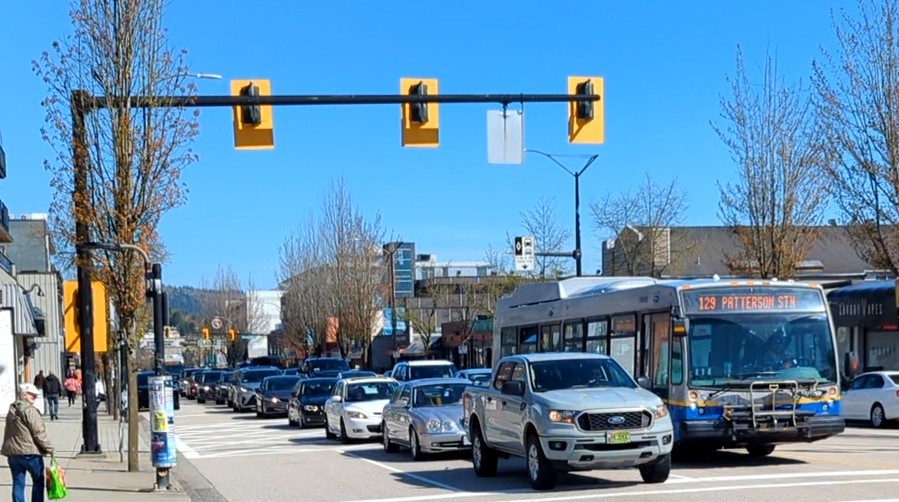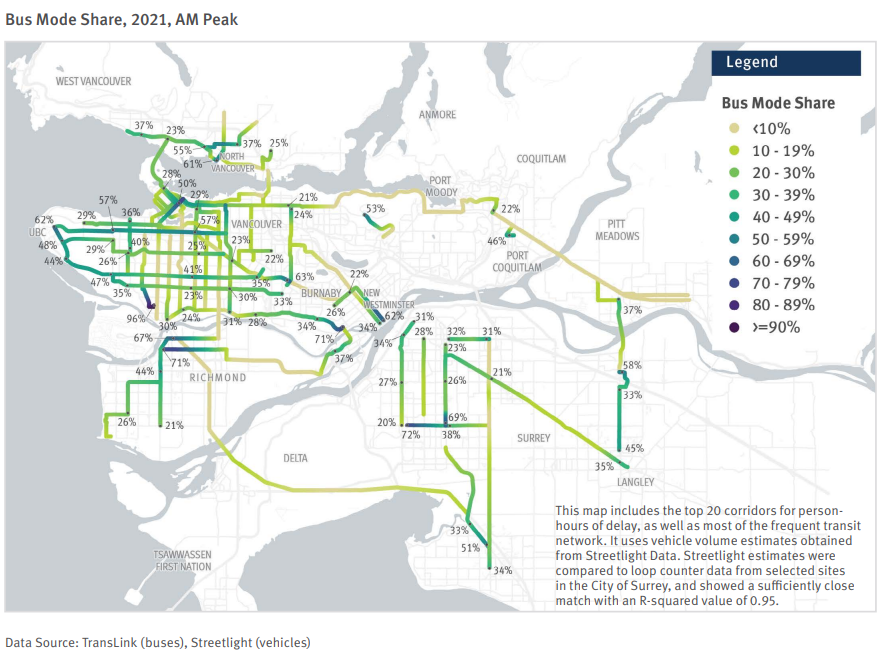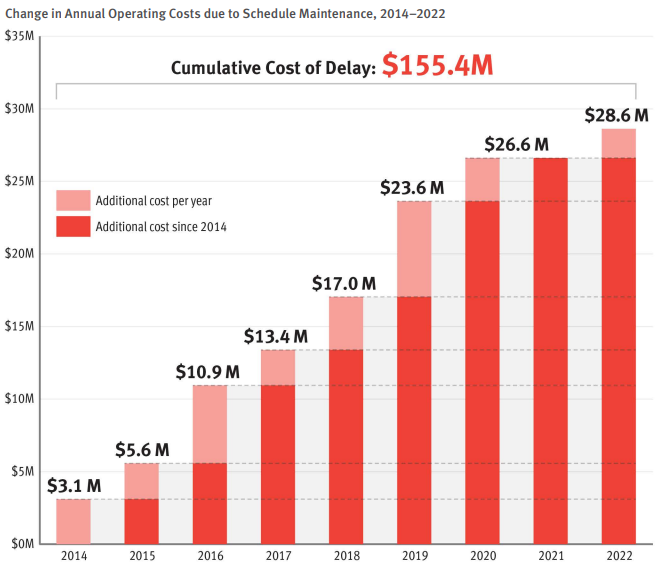
Bus lanes can protect bus riders from this kind of congestion, and this can allow TransLink to increase capacity. Read on to find out how.
New buses won’t come for two years, but we need overcrowding relief now. The only short-term solution to the transit crisis is to make buses faster and more reliable.
Movement was founded last year, in part, to draw more attention to the severe overcrowding and delay that affects transit riders in Metro Vancouver. Today, the BC Minister of Transportation Rob Fleming announced $300 million in new capital funding for TransLink. Movement wants to express its gratitude to the BC government for stepping up while the federal government continues to put off any kind of action.
TransLink currently has funded plans to address overcrowding on 60 routes as soon as September 2024, but they can only do this in off-peak times, because during the peaks, all of their buses are currently in use. $300 million should finally allow TransLink to buy 185 buses, which will allow them to address crowding in the most crucial times of day, but these buses may take 2 years to be delivered.
“Our transit network is bursting at the seams,” says Denis Agar, Executive Director of Movement. “Asking transit riders to wait another two years for relief is going to be a tough conversation, especially in an election year. Movement is calling for urgent action to make buses faster and more reliable. Why? Because faster transit is our most effective way of freeing up buses to address overcrowding. When bus routes get faster, they require fewer buses to operate. The buses that are freed up can be used to address crowding.”
Bus lanes are quick, cheap, and easy to implement, and they’re a responsible use of taxpayer money. Some small transit approach lanes implemented on 49th Avenue in South Vancouver in 2020 generated savings so quickly that the investment paid for itself in 0.4 years (source, page 53). That project consisted of mainly some new paint on the road and new overhead signage.
“Cities can roll out bus lanes in a matter of weeks,” continues Agar. “These lanes make it easier to get around, they make TransLink more cost-effective, and most importantly they address the overcrowding crisis. Lots of cities around the world have learned this and are rapidly rolling them out. If you’ve been to downtown Seattle recently, you’ll notice that they’ve got bus lanes on what feels like every street. We’ve fallen way behind and it’s a shame because we have three times as many bus riders as Seattle.”
The conventional wisdom is that bus lanes are unpopular, and that there will be loud protest against them. But in cities like Seattle, Boston, Indianapolis, Los Angeles, New York, Toronto, and more, bus lanes are being implemented without causing the sky to fall. “To politicians who pride themselves on running their city like a business, and using their taxpayers’ money wisely, I say: reach out to us. Bus lanes are the quickest, cheapest way for you to take a transformative action that will make peoples’ lives better overnight!”
Who can urgently address the transit crisis?
Movement is calling for quick, cheap upgrades to speed up buses immediately, and there’s a mix of governments who can help solve the problem. Here are a few examples of what each government can do:
Cities of Metro Vancouver (Vancouver, Surrey, Burnaby, etc.)
- New bus lanes: This is by far the most cost-effective option. Reallocating a lane of traffic to the bus involves some simple overhead signage and paint on the street. The outcome is instantaneous – faster, more reliable buses. Some places have even noticed their streets become safer as a result.
- Upgrading existing bus/HOV lanes: Broadway, for example, is one of the busiest transit streets in North America, but only has transit lanes at certain times of day, but congestion spreads throughout midday and into the weekend. Upgrading these to all-day operation is as simple as a sticker placed on an overhead sign.
- Right-turn signal phases: When buses use the lane next to the sidewalk, they can sometimes be held up by right-turning cars, who in turn can be held up by pedestrians. A right-turn signal phase flushes out those cars before they become a problem for transit riders.
BC Ministry of Transportation and Infrastructure (MoTI)
- Bus lanes on provincial highways: MoTI has a long history of extraordinary transit priority. Anyone who has sat in traffic at the head of the Lions Gate Bridge or Massey Tunnel has probably seen a bus fly by them, and it’s thanks to MoTI innovation. We need MoTI to build on this legacy and find ways to speed up the many dozens of routes that use provincial highways like Hwy 91, the Queensborough Bridge, and the Second Narrows Bridge. These projects can vastly increase the capacity of a bridge, tunnel, or highway without the need to spend billions on a widening project.
- Legislation enabling automated enforcement of bus lanes: Nobody wants police officers enforcing bus lanes. It’s expensive and it’s inconsistent. The province can allow TransLink to use the cameras it already has on its buses to enforce bus lane violations. This will speed up buses and could generate revenue too. Many of our peer cities have automated bus lane enforcement.
TransLink
- All-door Boarding: Cities like San Francisco have long allowed boarding from any door, at any time. TransLink currently allows boarding from any door on certain routes, and at certain stops, leading to a patchwork approach. Meanwhile, the advantages of all-door boarding are clear: not only does it speed up the bus, but it also spreads riders more evenly across the bus so the overall capacity increases.
- Bus Stop Balancing: Some bus stop locations in Metro Vancouver are closer together than the length of a SkyTrain platform. Ensuring that stops are more evenly spaced improves speed, reliability and comfort.
More details about the potential of faster buses
Movement strongly echoes the findings of TransLink’s 2023 Bus Speed and Reliability Report, which has some shocking stats and graphics:
- On many streets, buses move more than 30% of that street’s users – some are even over 50%. These numbers were collected during the pandemic when transit ridership was a fraction of what it is today. This makes an obvious case for bus lanes (p. 8)

- Some American cities have between 2 and 8 times more all-day bus lanes per-capita than Metro Vancouver (p.96).
- TransLink could save $80 million per year if congestion were eliminated. Their bus budget has been ballooning over the last decade due to growing congestion (p.15)
